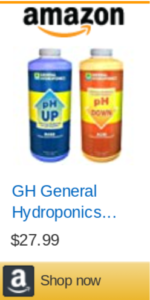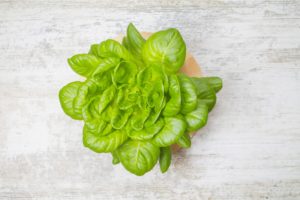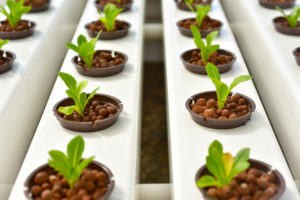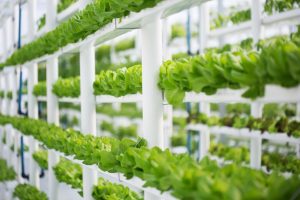Additives for Hydroponic Nutrients
Hydroponic nutrients are crucial to healthy plants, and nutrient solution is how growers provide the elements plants usually get from soil. Even once you have a nutrient solution that works for you, and your plants, you can still give them a little extra boost. Enter additives for hydroponic nutrients. Whether you purchase premade nutrient solution in bottles, or make your own, these additives can help your plants reach their full potential.
What are Additives?
Simply put, hydroponic additives are anything you put into your nutrient solution. In practice, it’s really all about substances that can ultimately enhance your plants’ growth. These can be either natural, like sea kelp, or synthetic, like certain chelating agents.
Additives aren’t always necessary for every nutrient formula, or every type of plant. However, when used appropriately, they can provide plenty of benefits that make them worth using.
Next, we’ll look at the most common additives, what they do, and when you should (or shouldn’t) use them.
Top Additives for Hydroponic Nutrient Solutions
Amino acids
Plants naturally produce amino acids, because they’re really the foundation upon which all proteins, cells, and structures are built. Of course, when plants produce these on their own, they have to use the nutrients they take in to do so. Many growers swear by using amino acids to improve plant growth, because it leaves the nutrients plants would otherwise use on making them available for other purposes.
Auxins
Auxins are plant hormones that help plants with new growth, and growing new roots. They’re naturally occurring in plants, although you can also purchase them from stores, often in liquid or powder form. These are most commonly used by growers making clones from cuttings, because auxins additives tend to enhance root growth, rather than foliage growth.
B vitamins
B vitamins are another favorite among hydroponic growers, and many start adding it into their solution as early as the sprouting stages. This vitamin group can help plants undergo changing conditions without as much stress, ward off or fight disease, and generally grow faster and stronger than they otherwise would.
Chelates
Chelates help plants get the minerals that aren’t as easy to obtain. This is especially true when it comes to metallic elements, like copper or iron. Because of that, you’ll often see chelate solutions labeled Fe chelate, as Fe is the chemical abbreviation for iron. Chelates are either organic or synthetic, and both can be used in hydroponics. One difference between the two is that organic chelating agents, like humic and fulvic acid, also add other essential nutrients to plants. Synthetic chelating agents simply ‘wrap’ molecules so plants can access them. Then the chelating agent goes right back into the solution.
Compost tea
Compost is a great natural and organic source of nutrients. In fact, some organic diy nutrient solutions use compost as the sole source of nutrients. Through the process of a variety of natural materials decomposing, minerals, helpful microbes, and nutrients are once again available. Compost tea typically involves ‘steeping’ or soaking compost in pure water for a few days, and then draining the liquid and removing the leftover compost debris. It does provide plenty of nutrients. However, it can also add an excess of certain nutrients when used in conjunction with another nutrient solution.
Epsom salts
Epsom salts are a common ingredient in many fertilizers, although many hydroponic growers use them when plants show signs of magnesium deficiency. That’s because epsom salt is actually made of magnesium, oxygen, and sulfate, thus it’s chemical name, magnesium sulfate. Many homemade nutrient recipes already include this in their formula, although they might not use the common name. Epsom salts can either go into a mixture for the actual nutrient solution, or in a spray that goes onto plants’ leaves.
Kelp (seaweed)
Kelp is a long time favorite among gardeners in soil and water culture alike. It can help plants get the optimal level of nutrients, especially when paired with other organic additives. Specifically, chelates like fulvic and humic acid. Kelp can come in nutrient solutions meant for root absorption, or solutions that growers spray onto leaves. If you’re simply adding it to your nutrient solution, and not using it as a base, you’ll typically find it as a powder, although kelp meal and raw kelp aren’t uncommon. Kelp is especially helpful in the flowering and fruiting stages, or whenever growers want to speed up the time to harvest.
pH adjusters
True, pH adjusters aren’t a nutrient additive. But they’re still one of the most common substances growers add to their nutrient solutions. Maintaining the correct pH range is absolutely essential to healthy plants. However, it also affects the elements, and the amounts thereof, that plants can take in. These adjusters usually come in liquid form, and can be used to either raise or lower pH as needed. Only use them when your test readings show that your nutrient solution is outside of the optimal pH range. These pH adjusters should be added in small amounts. Gradually use them until the solution reaches the proper level.
No matter what additives for hydroponic nutrients you prefer, always follow manufacturer instructions.
Try these easy pH adjusters:



